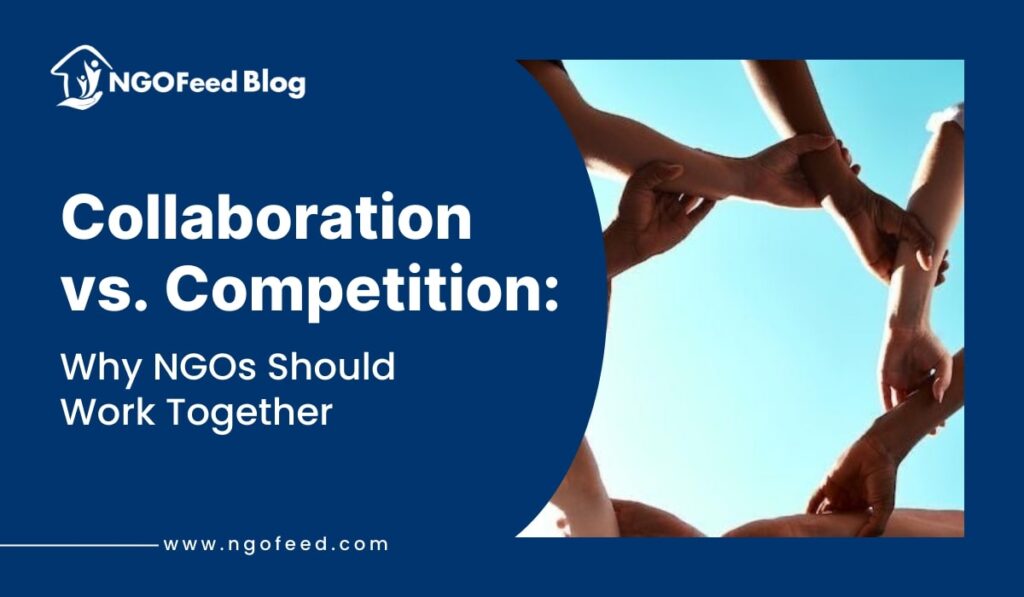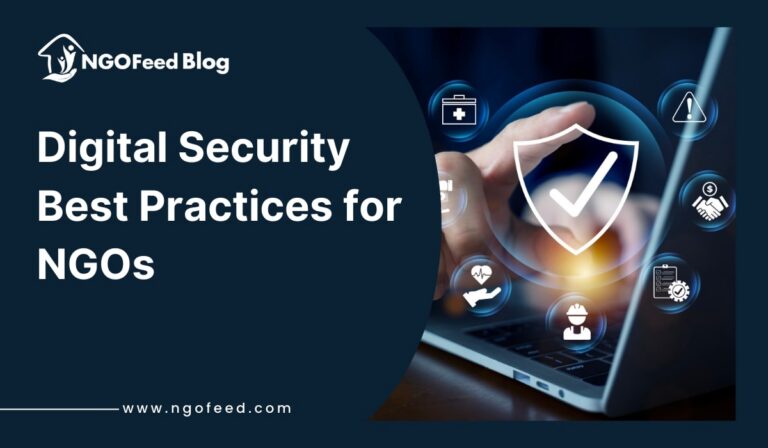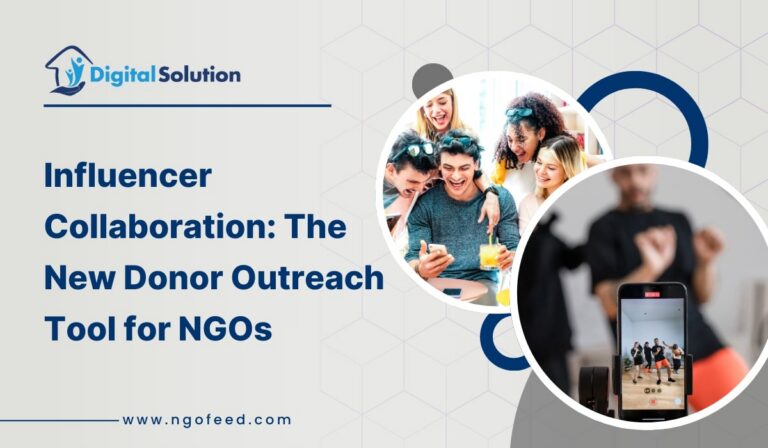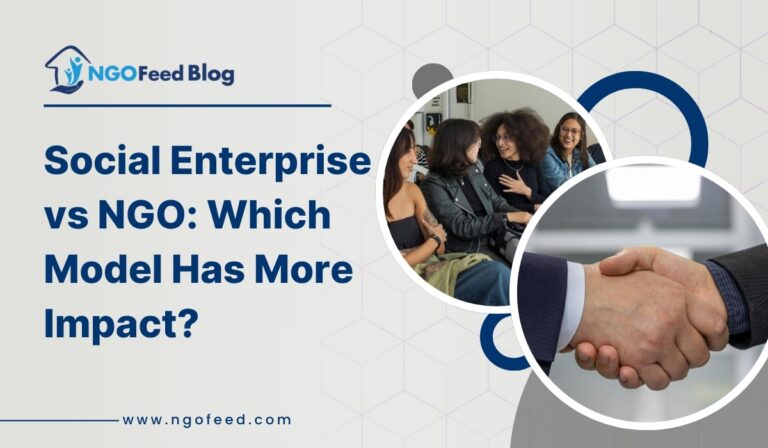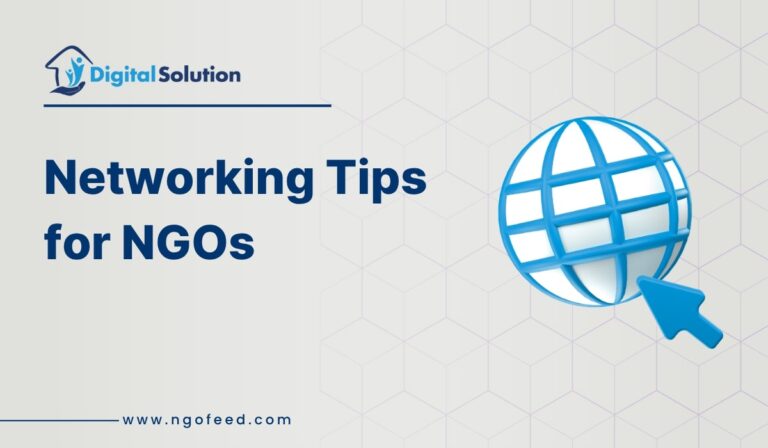Collaboration vs Competition: In a world struggling with intricate social, environmental, and humanitarian issues, Non-Governmental Organizations (NGOs) play a crucial role in fostering positive transformation. However, the arena they operate in is often plagued by constrained resources, overlapping responsibilities, and constant pressure to showcase their impact. Within this framework, the decision between collaboration and competition is not simply a tactical one; it is a key factor in determining an NGO’s capability to accomplish its mission.
While a certain level of healthy competition can encourage innovation and efficiency, an excessive focus on it can result in fragmented initiatives, squandered resources, and ultimately, a reduced impact. This article contends that collaboration, rather than being an unrealistic ideal, is a realistic and vital approach for NGOs aiming to enhance their efficiency and foster enduring change.
Table of Contents
The Pitfalls of Competition:
The NGO sector, similar to other sectors, is subject to competitive pressures. These pressures frequently appear as:
Also Read: AI for Social Issues
Resource Scarcity
The quest for scarce funding sources can compel NGOs to prioritize their own survival over collective achievements. This can result in duplicate efforts, with various organizations competing for the same grants and donors instead of combining resources to tackle the root causes of challenges.
Such competition can also lead to a “race to the bottom,” where NGOs compromise on program quality or employee welfare to secure funding.
Territorialism and Siloed Operations
A competitive attitude can cultivate a sense of territorialism, making NGOs hesitant to share information, expertise, or networks. This can lead to siloed operations, where organizations function in isolation, overlooking chances for synergy and cross-pollination of ideas.
This disconnection can obstruct the formulation of comprehensive solutions to intricate challenges, which often require a multi-faceted strategy.
Also Read: Tips for Nonprofit Impact Video
Duplication of Efforts
In the absence of appropriate collaboration, numerous NGOs may unwittingly be addressing the same issues within the same communities, resulting in resource wastage and possible confusion among beneficiaries.
Such duplication can also trigger donor fatigue, as funders might become exasperated by the absence of synchronized action.
The Power of Collaboration
Conversely, collaboration provides numerous advantages that can greatly enhance an NGO’s effectiveness:
Resource Optimization
By pooling resources, NGOs can realize economies of scale, lowering overhead expenses and maximizing the influence of their programs.
Also Read: Copyright and Plagiarism Rules NGOs
Joint fundraising initiatives can also boost access to funding, as donors are often more drawn to collaborative efforts that illustrate a coordinated strategy.
Knowledge Sharing and Expertise Exchange
Collaboration opens up avenues for NGOs to exchange best practices, lessons acquired, and innovative strategies.
By capitalizing on one another’s knowledge, NGOs can formulate more effective and sustainable solutions to complex challenges.
Enhanced Reach and Impact
Collaborative alliances can allow NGOs to connect with a broader audience and extend their geographical scope.
By collaborating, NGOs can strengthen their advocacy initiatives and bring about policy changes on both national and international fronts.
Also Read: Press Release Guide For Nonprofits
Building Stronger Communities
Collaboration can nurture stronger ties with local communities, as NGOs unite to cater to their needs and priorities.
This cooperative method can enable communities to assume responsibility for their own progress and enhance their resilience.
Enhanced Advocacy Strength
When several NGOs combine their efforts, they have a significantly greater influence on policy transformation than an individual NGO could achieve. This leads to broader changes on a larger scale.
Improved program effectiveness:
Working together can foster an atmosphere where each NGO can concentrate on their strengths, rather than attempting to replicate the initiatives of other NGOs. This promotes enhanced productivity in the efforts being made.
Fostering a Cooperative Culture
Establishing a cooperative culture within the NGO field necessitates a change in perspective and a dedication to nurturing robust partnerships. This can be accomplished through:
Also Read: How NGOs Can Use WhatsApp Groups to Engage Donors & Volunteers
Creating Platforms for Discussion and Information Exchange
Developing venues for NGOs to connect, exchange information, and address shared issues.Leveraging technology to support communication and collaboration, including online platforms and databases.
Forming Collaborative Partnerships
Identifying potential collaborators with complementary abilities and knowledge. Defining clear roles, responsibilities, and communication systems.
Encouraging a Culture of Trust and Openness
Fostering trust through transparent communication, mutual regard, and accountability. Disseminating information and data openly to enhance collaboration and prevent overlapping efforts.
Collaborative Training and Capacity Development
Joint training on subjects of shared interest enables multiple NGOs to enhance their skills, while also expanding networking possibilities.
Collaborative advocacy initiatives
Establishing joint advocacy initiatives allows for a more powerful message to be delivered to the public and to governmental entities. The fundamental reasons for NGO collaboration involve exploring the intricate dynamics that affect these organizations. We need to consider the various contexts in which they function, the unique challenges they encounter, and the actionable steps they can undertake to promote successful partnerships.
Also Read: Canva for Nonprofits
Contextualizing Collaboration
The demand for collaboration is notably different based on the specific area of work, the geographical region, and the size of the NGO. For example:
Humanitarian Aid: In regions afflicted by disasters, coordination is essential. NGOs are required to collaborate to prevent overlapping aid, guarantee fair resource distribution, and offer comprehensive assistance to impacted communities. This calls for robust inter-agency coordination frameworks, clear communication pathways, and a mutual comprehension of needs and priorities.
Environmental Conservation: Environmental issues frequently cross-national boundaries and demand a multi-stakeholder approach. NGOs addressing challenges such as climate change, deforestation, or loss of biodiversity must partner with governments, businesses, and local communities to realize significant and lasting results. This could incorporate collaborative research initiatives, advocacy efforts, and practical conservation projects.
Also Read: How Social Media in Amplifying Social Causes
Social Development: NGOs focusing on subjects like poverty, education, or healthcare typically function in complex and segmented social environments. Working with local communities, governmental bodies, and other civil society groups is vital for crafting contextually appropriate and sustainable solutions. This involves establishing trust, encouraging dialogue, and empowering local stakeholders.
Addressing the Challenges of Collaboration:
Despite the evident advantages of collaboration, various obstacles can impede its successful execution:
- Power Imbalances: Collaborations between large global NGOs and smaller local entities can be fraught with power disparities. Larger organizations may overshadow decision-making processes, resulting in diminished ownership and involvement from local partners. Tackling these disparities necessitates a dedication to equitable partnerships, transparent decision-making, and capacity building for local entities.
- Differing Organizational Cultures: NGOs typically possess unique organizational cultures, principles, and operational methodologies. These variances can lead to tensions and obstruct collaboration. Creating connections across cultural gaps necessitates open dialogue, mutual respect, and a readiness to compromise.
- Funding Constraints: As previously indicated, competition for funding may inhibit collaboration. Donors hold a significant position in fostering collaboration by providing financial support for collective initiatives and encouraging partnerships.
Also Read: How AI is helping NGOs?
- easuring Impact: Precisely gauging the effects of collaborative ventures can be difficult. It is crucial to formulate strong monitoring and evaluation systems that reflect the joint impact of partnerships to show accountability and learn from experiences.
- Logistical challenges: Coordinating between various organizations, particularly when engaging with international partners, can be a significant challenge. Differences in time zones, language barriers, and varying reporting requirements all add to the complexities of collaboration.
Practical Strategies for Effective Collaboration:
To navigate these obstacles and enhance effective collaboration, NGOs can implement the following strategies:
- Develop Formal Partnership Agreements: Clearly outline the roles, responsibilities, and expectations of each partner. Create structures for conflict resolution and ensure that agreements yield benefits for all parties involved.
- Invest in Relationship Building: Collaboration is founded on trust and solid relationships. Dedicate time to fostering connections with potential partners through consistent communication, joint meetings, and social gatherings.
- Establish Joint Working Groups: Form working groups that unite representatives from various organizations to collaborate on particular projects or initiatives.
- Utilize Technology for Communication and Coordination: Employ technology to aid communication, disseminate information, and organize activities. Utilize project management tools, online platforms, and video conferencing to improve collaboration.
- Conduct Joint Needs Assessments: Partner to perform needs assessments to guarantee that programs align with the priorities of local communities and other stakeholders.
- Share Data and Information: Create systems for the secure and responsible sharing of data and information. This can assist in preventing duplication of efforts and enhancing the effectiveness of programs.
- Advocate for Collaborative Funding Mechanisms: Urge donors to back collaborative initiatives and provide funding for joint projects.
- Implement Joint Monitoring and Evaluation Systems: Establish systems to monitor the progress and impact of collaborative initiatives.
- Create a culture of learning: Foster environments where all NGOs involved can exchange their successes and failures to learn from one another.
Also Read: Role of Chatbots in Enhancing NGO Support Service
By adopting these strategies, NGOs can transcend silos and cultivate a more collaborative and effective sector. This will empower them to tackle the intricate challenges confronting our world and foster a fairer and more sustainable future.
the changing environment of global development and the involvement of various stakeholders. This encompasses analyzing the intersectionality of challenges, the significance of local ownership, and the growing dependence on technology and data-informed strategies.
Intersectionality and Holistic Approaches:
Addressing Interconnected Challenges: Numerous global issues are linked. For instance, climate change worsens poverty, food insecurity, and displacement. NGOs must embrace holistic strategies that acknowledge these connections and function across various sectors.
- Integrating Diverse Perspectives: Cooperation should go beyond conventional NGO collaborations to incorporate a wide range of stakeholders, including community-based organizations, educational institutions, and the private sector. This ensures that solutions are shaped by a broad spectrum of viewpoints and experiences.
- Promoting Gender Equality and Social Inclusion: Cooperative efforts should emphasize gender equality and social inclusion, making sure that marginalized populations are actively engaged in decision-making processes and equitably benefit from programs.
Also Read: Role of Chatbots in Enhancing NGO Support Service
Local Ownership and Empowerment
Shifting from Top-Down to Bottom-Up Approaches: Successful collaboration demands a transition from top-down methodologies to bottom-up strategies that emphasize local ownership and empowerment.
- Building Local Capacity: NGOs must invest in enhancing the capabilities of local organizations and communities to spearhead their own development efforts. This entails offering training, technical support, and access to resources.
- Respecting Local Knowledge and Culture: Collaborative efforts should honor local knowledge, culture, and traditions. This requires working with local communities to create culturally suitable solutions that align with their needs and priorities.
- Decolonizing Aid: The idea of decolonizing aid is increasingly significant. This entails moving away from a donor-focused model towards one that empowers local actors and honors their independence. Collaboration that genuinely strengthens local actors is an essential aspect of this transition.
Also Read: How to Host Successful Nonprofit Events
Technology and Data-Driven Collaboration
Leveraging Technology for Communication and Coordination: Technology can serve an essential function in promoting communication, coordination, and information sharing among NGOs. This encompasses utilizing online platforms, mobile apps, and data visualization tools.
- Utilizing Data for Decision-Making: Data-informed strategies can assist NGOs in gaining a superior understanding of the needs of their beneficiaries, monitoring the advancement of their programs, and assessing their impact. Collaborative data sharing can enhance the effectiveness of these strategies.
- Ethical Considerations of Data Sharing: It is crucial to tackle ethical issues linked to data sharing, including data privacy, security, and consent. NGOs must ensure that data is gathered and utilized responsibly, safeguarding the rights of beneficiaries.
- Remote Collaboration: The pandemic demonstrated how effective remote collaboration can be. NGOs can apply these insights to boost collaboration even when face-to-face interactions are not feasible.
Also Read: First Party Data for Nonprofit
Measuring Collaborative Impact
- Developing Joint Monitoring and Evaluation Frameworks: NGOs ought to create joint monitoring and evaluation frameworks that capture the collective influence of their collaborative efforts. This involves defining shared metrics, gathering data collaboratively, and analyzing outcomes together.
- Focusing on Long-Term Impact: Collaborative initiatives should aim for long-term, sustainable effects, rather than merely short-term outputs.
- Utilizing Qualitative and Quantitative Data: Measuring impact requires the integration of both qualitative and quantitative data. Qualitative data offers insights into the experiences and viewpoints of beneficiaries, whereas quantitative data supplies evidence of program effectiveness.
- Sharing lessons learned: A crucial aspect of measuring impact involves sharing the lessons learned with the entire NGO community. This promotes ongoing enhancement of the collaborative process.
- By addressing these changing dynamics, NGOs can establish stronger, more effective partnerships that promote positive change and contribute to a more equitable and sustainable world. Collaboration is not merely a strategic option; it is a moral obligation.
Also Read: How To Measure Social Media ROI For Nonprofits?
Conclusion
In summary, the NGO sector is at a pivotal point. The complex, interconnected challenges confronting humanity necessitate a shift from isolated efforts to strong, collaborative action. While healthy competition can drive innovation, an excessive focus on it results in fragmented resources and reduced impact. The way forward involves adopting collaboration as a core principle.
This requires a deliberate effort to break down silos, cultivate trust, and encourage a culture of shared learning. Practical strategies, including formal partnership agreements, collaborative working groups, and data-driven methods, are crucial for converting collaborative intent into concrete outcomes.
Furthermore, genuine collaboration goes beyond simple partnerships. It demands a dedication to local ownership, empowerment, and the incorporation of diverse perspectives. By emphasizing bottom-up approaches, valuing local knowledge, and advocating for fair partnerships, NGOs can ensure their initiatives are genuinely transformative.
The changing landscape of global development, marked by intersecting challenges and technological progress, calls for adaptability and innovation. NGOs must harness technology for communication, coordination, and data-informed decision-making, while staying vigilant about ethical implications.
Also Read: SEO Strategies For NGOs
Ultimately, the effectiveness of NGO collaboration depends on a united commitment to a shared objective: creating a more just, equitable, and sustainable world. By recognizing collaboration as a moral responsibility, NGOs can enhance their impact, optimize their resources, and establish a future where positive change is not just achievable, but certain.

